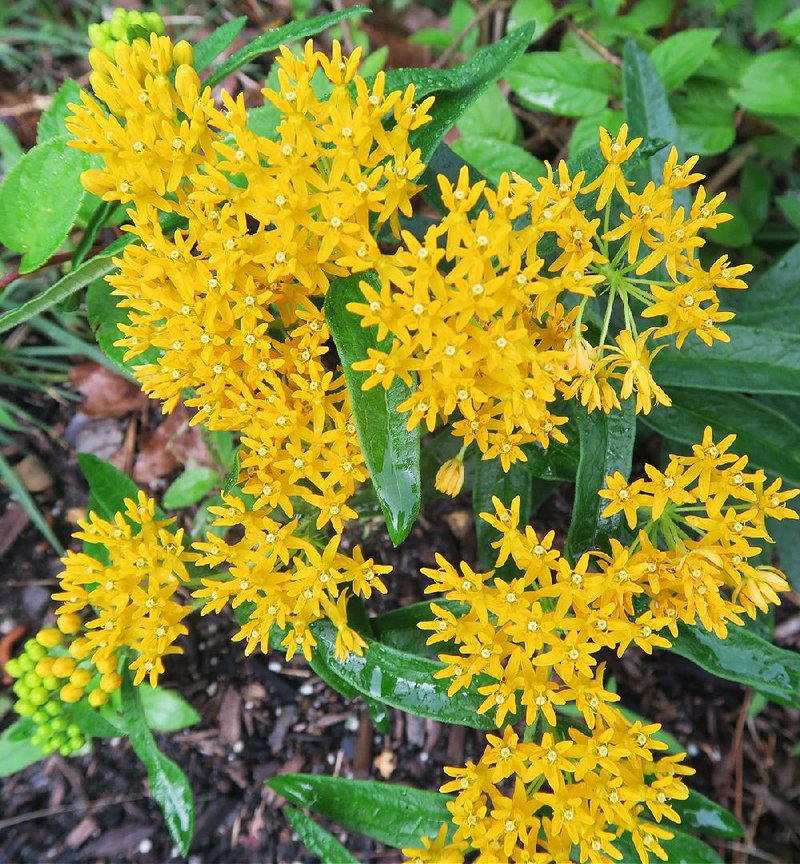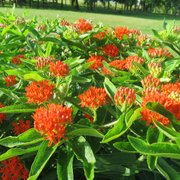JUNE
From a cold spring to a wet May, maybe we need to change the saying to "May showers bring June flowers." We have definitely had the rain in May, and some gardens are a bit waterlogged.
• There is still plenty of time to plant flowers and vegetables. It's not too late to plant warm-season vegetables, including tomatoes, peppers, eggplant and squash.
• It is prime time to plant pumpkins and winter squash, along with okra and Southern peas.
• Harvest is ongoing for spring-planted crops, and many are beginning to get their first tomato harvest.
• Gardeners could add a bit more fertilizer to their crops. All this rain can leach out the nutrition. Don't be heavy-handed. A light application is best.
• Monitor your garden for insects and diseases. We are getting reports of some caterpillar activity, but aphids and spider mite populations have actually been reduced by the rains. As soon as it dries up, they will be back, so keep a sharp eye. The sooner you catch a problem, the sooner you can control it.
• If you haven't cut back the foliage on spring-flowering bulbs, do it now. From daffodils to tulips, bulbs have had ample time to replenish their resources for next year, and their season is over. The foliage has lasted longer with the mild weather conditions.
• Now is an excellent time to plant caladium bulbs. These summer bulbs will be up and growing in no time and will last until a killing frost.
• Summer annuals are in abundance at nurseries and garden centers statewide. (The winter annuals lasted so nicely that
many of us are late in planting for summer.) Look for plants
that can take the heat of our summers, including pentas, lantana, Angelonia and zinnias for sun, and torenia, impatiens and coleus for shade. Tropical flowering plants will also thrive for the rest of the summer.
• Regular applications of fertilizer and water will keep annuals and tropical flowering plants blooming their best.
• It is hard to keep up with mowing given all this rain. Lawns are growing rapidly. If you fertilize, you will increase that rate of growth. But we fertilize at least once a year to keep the lawn at its best. A slow-release high nitrogen fertilizer is best. Normally, after spring green-up is the best time to fertilize, but you can do so anytime throughout the summer prior to mid-September for the warm-season grasses.
• If you have any spring-blooming shrubs or trees that need pruning, you need to get the job done by the middle of June. All spring-blooming plants set their flower buds at the end of the summer. If you wait too late to prune, the hot, humid days of July and August will slow down the plants' recovery time, and it won't give you as many blooms next year as it might.
• Summer-blooming shrubs such as summer spirea, butterfly bush (buddleia) and roses benefit from deadheading. Or you can give them a "haircut" after flowering to keep them blooming better all summer.
JUNE BUGS
Gardeners in central Arkansas have seen some damage to oak trees from a small beetle often referred to as a "May beetle" or "June beetle." These are the adults of the white grubs you often find in the soil.
The oaks most affected have been red, cherrybark and Southern red oaks, and they've lost leaves. Trees that grow alone in open areas or on the edge of forests were most affected by defoliation.
Luckily the insects don't last long and rarely do they cause enough damage to kill a tree.
The grubs feed on plant roots and decaying organic matter. In the spring, the adults emerge to mate and feed on broadleaf plants -- this year, oak trees seem to be a favorite. The beetles are not active during the day, coming out to feed at night.
The beetle outbreak was most heavily reported in Faulkner and White counties, with some noticeable damage also seen in surrounding counties.
PLANT OF THE MONTH
Butterfly weed (Asclepias tuberosa) is a member of the milkweed family and a wonderful perennial plant for the sun garden. It is the only member of the milkweed family without a milky sap, but it is still poisonous, and the deer leave it alone.
While orange blooms are most common, there are yellow and red varieties as well.
This is a host plant for the monarch butterfly, but it also attracts other butterflies and hummingbirds.
The plant forms a strong taproot, which makes it drought tolerant but also hard to transplant. You can plant from seed in the fall or buy plants at local garden centers.
To keep butterfly weed blooming throughout the summer, deadhead the spent blossoms. In late summer, allow the flowers to form seed heads, which you can save to share with friends or simply plant more butterfly weed in your garden.
This plant blooms from mid-May through September. Once established, it lasts for years, becoming thicker each season.
Janet B. Carson is a horticulture specialist for the University of Arkansas Cooperative Extension Service.
HomeStyle on 05/30/2015


